A Great Blue Heron Has a Huge Breakfast
Hunting for fish is becoming easier as water levels drop
Marana is allowing the water level at the El Rio Preserve to drop for necessary clean up of the Preserve which will include removal of many of the overgrown reeds. Marana has quit filling the lake for this purpose and the water level is rapidly dropping between evaporation and water soaking into the ground. With fewer deep pools, the fish in the lake became more concentrated in smaller and isolated sections. That made hunting for food much easier for the herons, egrets and kingfishers in the neighborhood including this Great Blue Heron.
Great Blue Herons are the largest herons in the United States. They are about 4 feet long from beak to tail with a wingspan of 6 feet. Despite that size, they may only weigh about 5 pounds. Birds’ bones are lightweight with a hollow structure, allowing for flight. Great Blue Herons have a long, S-shaped neck and a long dagger-like bill. The bird in this post is a juvenile and not an adult. Adult Great Blues have a black cap with white underneath which non-adults do not have. Juveniles have a two toned bill, dark on top and orange below.
Great Blue Herons hunt by either standing motionless in water, waiting for food to come close, or they wade slowly while alert for prey. When they see something edible, they will strike quickly with the long reach that their neck allows. Birdnote shares a bit more about these special birds.
This particular Great Blue did not have luck where he was hunting, so he took off to another part of the Preserve. In flight, Great Blue Herons look very prehistoric as do other large herons and egrets. Birdnote shares more about their prehistoric look and sound.
While out of sight, apparently the Great Blue Heron found a better fishing spot. It was hidden from me by reeds but after a while the Heron began walking slowly into view with a nice catch- a huge goldfish or koi of some kind! Sadly, people dump unwanted aquatic pets into any local waters. These fish are a destructive invasive species that can outcompete native fish, threatening native aquatic life and disrupting desert ecosystems.
The question was, can a bird that size eat a fish that size? The Great Blue Heron worked with the fish for a short while, then tossed it into the air. It was trying to position the fish so it could swallow the fish head first. However, Great Blue herons do not have any ‘hands’ to help with that process so this bird had to use a carefully timed and executed toss for the task.
Apparently, the first fish toss was successful. The Heron quickly began to work the fish down its throat.
Its throat expanded to swallow the prey. The Heron definitely had a mouthful!
With a final wave of the fish’s white tail, it disappeared down the Heron’s throat.
You can almost sense how that fish felt going down the throat of the Great Blue Heron. That is a very big fish to swallow. Compare the size of the bird’s throat in the following picture with its throat in the final image. In that final image, the fish had quickly settled in the Heron’s belly.
I thought that after eating such a large fish, the Heron might rest for a bit. However, within a minute, it continued to hunt. I never saw it catch another fish but I also left after a short while.
The only reason I had come to El Rio that morning was because the day before a friend had taken photos of a Great Blue Heron catching and eating a very large goldfish. With the water levels dropping we both knew there may be good opportunities to witness such a hunt. So I returned to El Rio that morning and, thankfully, was treated to this special breakfast behavior! Lucky me!!
Just about one year ago I watched as a Great Blue Heron at El Rio worked on swallowing a Bullfrog from almost the same spot where I shot today’s series. You can revisit that post here!
And it finally did swallow that huge bullfrog as you can see here.


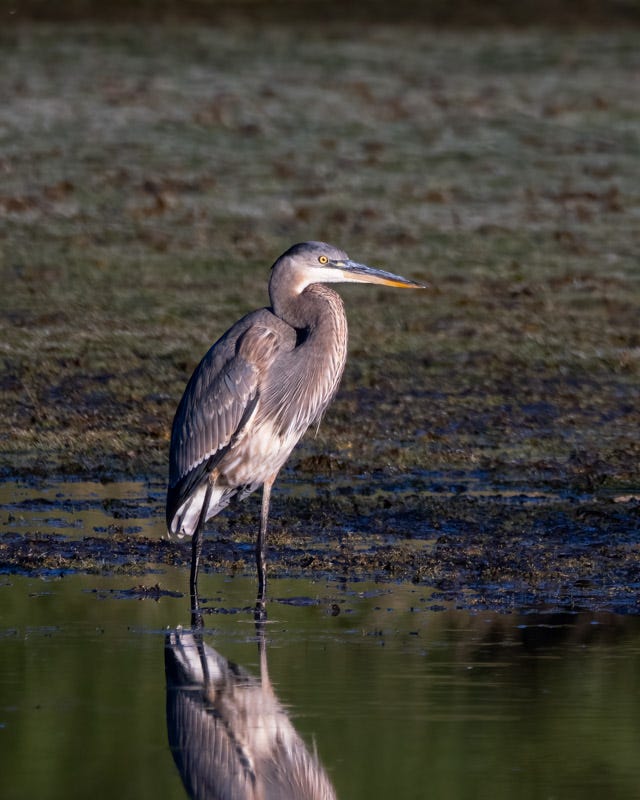

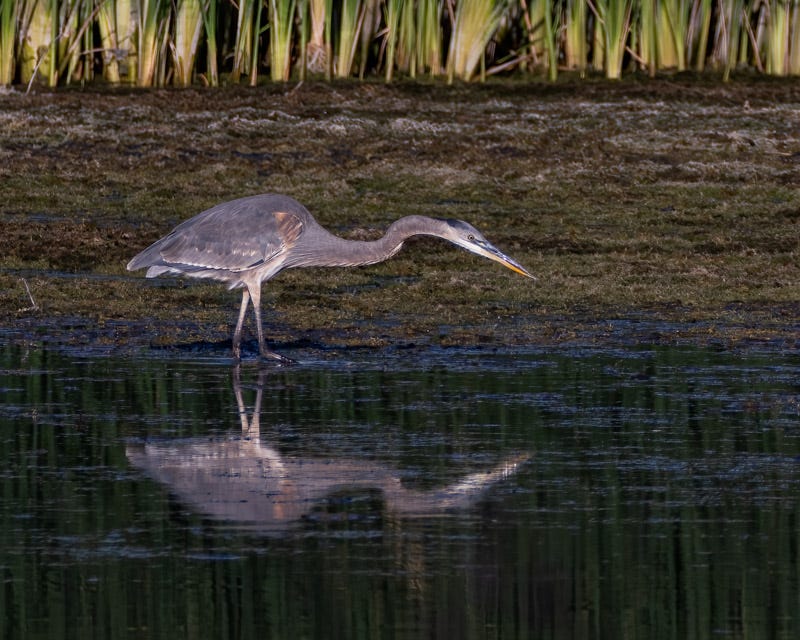



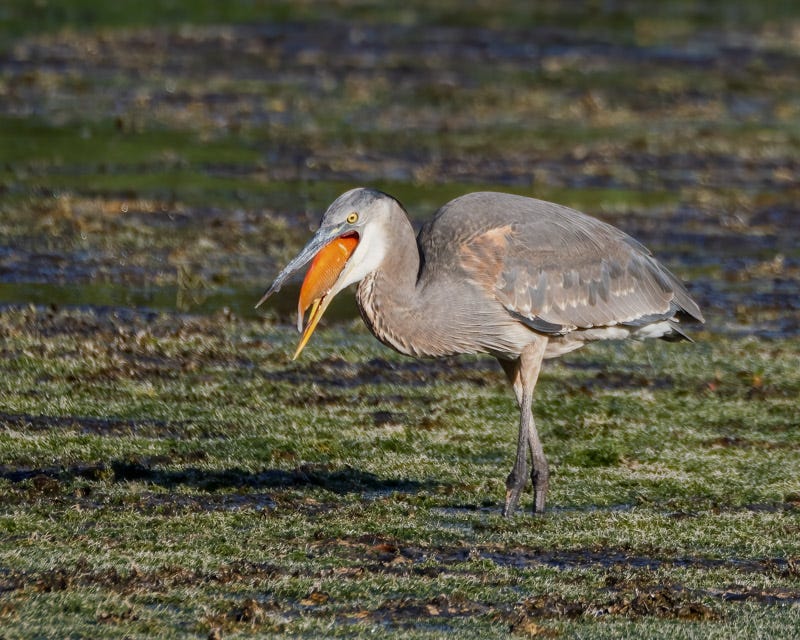
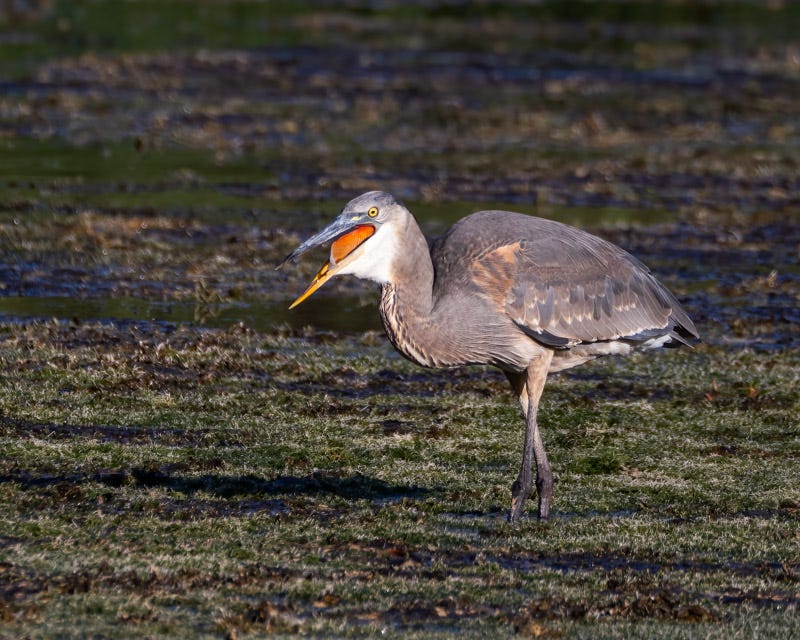
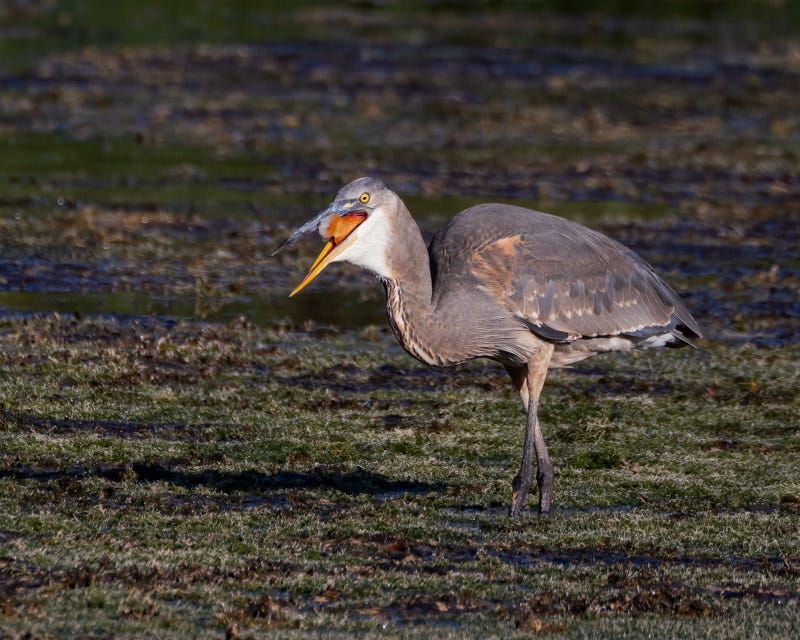
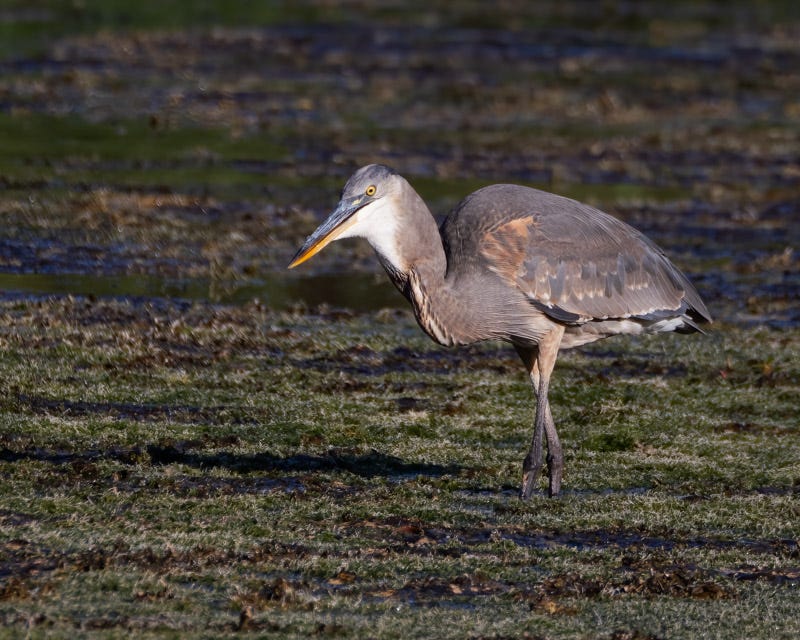
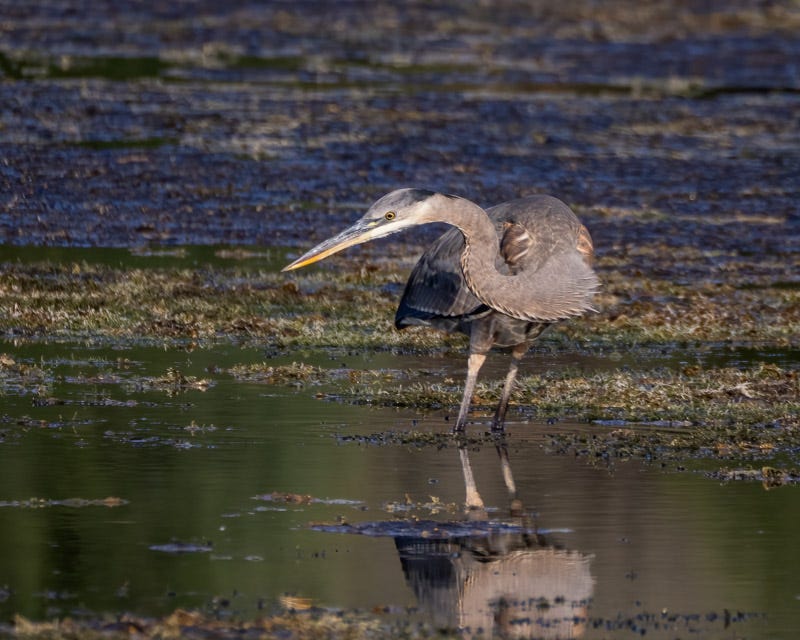
Wow! That was a huge bite!
Looks like a statue and not a real bird..Thanks